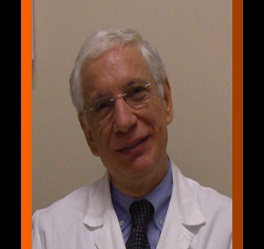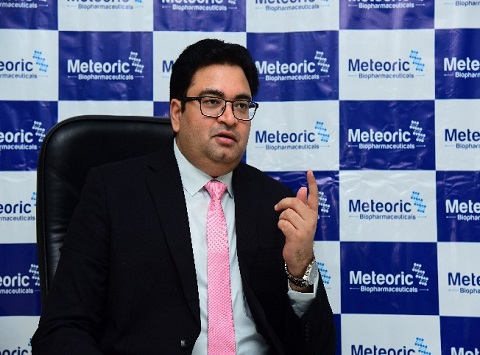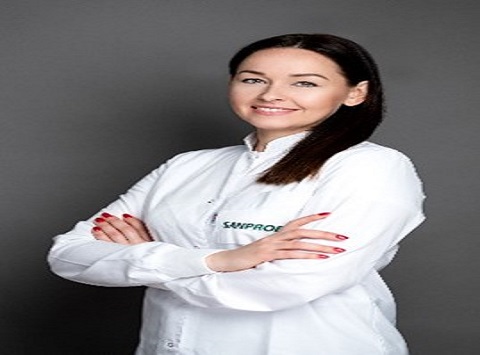Keynote Speaker

Mario Guslandi
S.Raffaele University Hospital, Italy
Mario Guslandi graduated in Medicine and specialized in Gastroenterology at the State University of Milan. He has been research fellow and Medical Assistant at the Institute of Internal Medicine of University of Milan from 1978 to 1990. In 1990 he moved to S.Raffaele Hospital of Milan, where he has been Head of the Clinical Hepato-Gastroenterology Unit from 1991 to 2016. Since January 2017 he is Consultant Gastroenterologist at San Raffaele Hospital. He is also Adjunt Professor at both the School of Medicine and the Post-graduate School in Gastroenterology of the S.Raffaele University of Milan. Dr Guslandi is a Fellow of the American College of Gastroenterology and a member of the British Society of Gastroenterology. He is author of more than 500 scientific papers, most of which appeared in international medical journals and participated as a speaker in various international congresses and symposia.
Probiotics are potentially helpful in treating chronic intestinal disorders, where an imbalance in the composition of the gut microbiota – so-called dysbiosis- has been reported.This applies partially to inflammatory bowel disease (especially ulcerative colitis and pouchitis),irritable bowel disease (IBS) and symptomatic, uncomplicated diverticular disease (SUDD).
Inflammatory Bowel Disease
A significant reduction in the intestinal amount of Firmicutes ( especially Faecalibacterium Prausnizii and Bacteroides fragilis) Roseburia hominis of Bifidobacteria has been observed in IBD patients.
By contrast, an increased presence of Campylobacter concisus and Ruminococci has been reported. Others have found a decrease abundance of Prevotella and Butyricimonas both in inflamed and non-inflamed mucosal areas in Ulcerative Colitis( UC) patients.
Various placebo-controlled clinical trials both in adults and in children with Crohn’s Disease( CD) employing either different strains of Lactobacilli or the probiotic mixture VSL#3 failed to find any significant effect in preventing clinical or endoscopic recurrence.
A large randomized trial comparing Saccharomyces boulardii alone and placebo observed no differences between the two groups, whereas it appears that adding that probiotic to mesalazine may significantly reduce the recurrence rate compared with mesalazine alone.
Controlled clinical trials versus mesalazine in the maintenance treatment of UC have found that the E.Coli Nissle 1917 and mesalazine have comparable efficacy in maintaining clinical remission for up to 12 months .
In a double-blind, placebo-controlled trial VSL#3 was significantly superior in inducing remission and in improving the disease activity score of UC. When added to mesalazine VSL #3 proved to be significantly superior to placebo + mesalazine in maintaining remission in children with UC.
Moreover VSL# 3 is the only probiotic able ,in monotherapy, to maintain remission and prevent relapses of pouchitis in UC patients undergone restorative proctocolectomy with ileal pouch-anal anastomosis
Irritable Bowel Syndrome
Irritable bowel syndrome (IBS) is a clinical condition the symptoms of which (abdominal pain, diarrhea and/or constipation, bloating) can be partially related to an intestinal dysbiosis (reduced fecal concentrations of Lactobacilli, Bifidobacteria and of Faecalibacterium prausnitzii)
Unfortunately, trials with probiotics in IBS have employed different products, in different doses and for different lenght of time, which hampers the possibility to reach definitive conclusions.
Various meta-analyses have concluded tha probiotics as a group, are useful in ameliorating symptoms in IBS patients. This especially applies to Bifidobacteria, either alone or in association with other strains, but the quality of evidence remains low.
Diverticular disease
In clinical practice we are mostly dealing with Symptomatic Uncomplicated Diverticular Disease (SUDD), a scenario where the use of probiotic agents can have a rationale.
In addition to the fact that the gut microbiota is involved in the development of diverticulitis, dysbiosis is supposed to be present also in SUDD. Higher amounts of Enterobacteriace in the stools of such patients have been reported. Moreover a study of the fecal microbiota in patients with recent diverticulitis found a higher abundance of Pseudobutyrivibrio and Bifidobacteria and determined a possible correlation between abdominal pain and relative abundance of Cyanobacteria, and between bloating and abundance of Ruminococcus and reduction of Roseburia.
Most controlled studies in SUDD have employed probiotics co-administered with mesalazine showing that the combination is significantly more effective than the single agents in reducing symptoms and preventing recurrence of diverticular inflammation. However controlled trials employing probiotics alone in diverticular disease are few and inconclusive.
Conclusions
The existence of a dysbiosis constitutes a good rationale for employing probiotics in chronic intestinal disorders such as IBD,IBS and diverticular disease.
As regards IBD, probiotics appear of little use in Crohn’s disease, whereas more convincing results are available in UC.
In IBS patients probiotics (especially containing Bifidobacteria ) appear to be able to improve one or more symptoms, but dosages and lenght of treatment need to be better defined.
The possible role of probiotics in diverticular disease remains still to be determined.
Keynote Speaker

Olaf Larsen
Senior Manager Science at Yakult Nederland B.V - Netherlands
Olaf Larsen studied chemistry at the VU University Amsterdam and obtained a PhD in physics there as well. Following postdoctoral research in New York City and Amsterdam, he continued his career within industry. Olaf worked for ASML, TNO and as a consultant life sciences within various organizations. Since 2012 he is heading the Science department at Yakult Nederland B.V., and member of the Management Team. Since 2016, he is also part time Ast. Professor the VU University focusing on the valorization and computational modelling of microbiota management.
The rise of zoonotic diseases, illustrated by the recent SARS-CoV2 pandemics, urges us to critically reconsider our thinking on health. With an increased focus on pathogenic microorganisms crossing the human-animal domains, one should not forget that beneficial microbial interactions crossing different domains like human, animal and soil are at least equally important in this respect. As such, integration of these different microbial domains will provide us with tools to tackle current and upcoming health issues. In this lecture, this vision will be discussed in relation to the human gut microbiota. Specifically, the importance of gut microbiota management in relation to different ecological domains will be illustrated for COVID-19. Recently obtained epidemiological data on both communicable and non-communicable diseases will also be shown, corroborating the importance of gut microbiota management from a one health perspective.
Keynote Speaker

Elias Hakalehto
CEO/CSO at Finnoflag Oy. - Finland
E. Elias Hakalehto, PhD, graduated from the University of Helsinki as a microbiologist in 1983. In 1995 he received the Postgraduate Diploma in Biotechnology from Canterbury and London, U.K. He is an alumnus of University College London in biochemical engineering. His R&D company Finnoflag Oy (est.1993) has carried out over 100 projects for various industries and universities. He was nominated year 2008 as an Adjunct Professor of biotechnical microbe analytics in Kuopio (nowadays University of Eastern Finland), and an Adjunct Professor for the University of Helsinki in 2016 in microbiological agroecology. Year 2015 he became the vice president of the International Society of Environmental Indicators, chairing the global 22nd ICEI conference in Helsinki 2017. Dr. Hakalehto has edited several scientific books on microbiome, hygiene maintenance, etc. His inventions include the Portable Microbe Enrichment Unit (PMEU), Bacteriological Intestinal Balance (BIB) and novel biorefineries. He is the Fellow Member of the International Society for Development and Sustainability (ISDS) (Japan).
From the human perspective, ecology is often seen as a continuous battle for survival. However, in the microbial world, the truth is different. Since the physicochemical circumstances in various niches can be highly variable, the functionality of the microbial communities must be maintained by their versatility. In the intestines, this means the most diverse presence of various strains. These strains also strive for balance in the changing milieu. Although some bacterial strains could take over the space in particular conditions, it is advantageous for the entire community if it could provide novel genetic and metabolic traits in the altering surroundings. To maintain the metabolic baseline in the human duodenum and beyond, the enterobacterial strains form the basis of the dualistic balance. Then the mixed-acid fermenting strains, such as Escherichia coli, by secreting, e.g. acetic acid, boost the 2,3-butanediol producing strains, such as klebsiellas. The latter ones maintain the microbial ecosystem's pH and osmotic balances. The more species join the balance, the more metabolic alternatives are offered. For example, the lactic acid bacteria modulate and attenuate other flora by excreting lactate. However, in human digestion, the enterobacterial strains constitute the foundation of Bacteriological Intestinal Balance (BIB) which prevails along the column of a healthy human gut.
Key words: Enterobacteria, dualistic balance, gut pH, duodenum, mixed-acid, 2,3-butanediol, Escherichia coli, Klebsiella sp., lactic acid bacteria, microbiome, biodiversity
Speaker

Chrysi Sergaki
Head of the Microbiome Section at NIBSC/MHRA - United Kingdom
Dr Chrysi Sergaki is the interim Head of Microbiome section at the National Institute for Biological Standards and Control (NIBSC), working on microbial interactions and how to utilise them for the benefit of human health.At NIBSC, Chrysi is leading the microbiome standardisation program, with 18 World Health Organization (WHO) endorsed projects to develop International Reference Reagents for the microbiome field as well as research projects investigating the role of the microbiome in health and disease. Prior to this, Chrysi has been working at NIBSC as scientist for two years leading research projects as well as the development of reference reagents for the DNA extraction of microbiome samples and will be evaluated as candidates for the first World Health Organization Whole Cell Reference Reagents for the microbiome.Before joining the NIBSC in 2019, Chrysi completed her PhD at the University of Warwick, UK, researching microbial interactions in fungi and bacteria and their impact on the host by combining laboratory and bioinformatics approaches.
Developing global standards for the microbiome field
Effective standardisation is essential to translational research and product development. Reference reagents, often termed standards, are routinely used in the field of biologicals to allow for commutability of results across clinical studies and give assurances of quality for manufactured products or diagnostic assays. The microbiome field suffers from a lack of validated reagents and a framework for how they should be used. The National Institute for Biological Standards and Control is leading multiple World Health Organization Collaborative Studies to establish a range of reference reagents suitable for standardising microbiome methodologies. These include site-specific DNA and whole-cell reagents for standardisation of next generation sequencing (NGS), bioinformatics, and DNA extractions. Importantly, we have developed a reporting framework which can be used in conjunction with developed reagents to allow for meaningful interpretation of the results by users. Here, we will discuss the development of these reagents and how they can be used, the framework for WHO collaborative studies which run throughout 2021, and how widespread adoption of these reagents can facilitate study commutability, assay development, and product quality.
- The microbiome field lacks effective standardisation of methodologies to analyse the human microbiome
- We developed DNA reference reagents for the standardisation of the NGS analysis of microbiome samples (NIBSC-DNA-RR) and Whole Cell reference reagents for the standardisation of the DNA extraction of microbiome samples (NIBSC-WC-RR)
- These reagents can act as global working standards and will be evaluated as candidate World Health Organization international reference reagents for NGS analysis and DNA extraction of microbiome samples
Speaker

Jean-Pol Warzee
ESLP– European Scientific League for Probiotics-Belgium
With nearly 25 year’s experience in the Microbiota and Microbiotics, Jean-Pol Warzée, Medical Doctor, has participated to many research and development projects in this area in Human Health in collaboration with European Research Centers and Universities. Jean-Pol has collaborated to the development of new Microbiotics solutions and is author, co-author of many publications. Co-Founder 10 years ago of the ESLP - European Scientific League for Probiotics for 2012, Jean-Pol is also the nominated President of the ESLP. Member of several international scientific associations, he has been Vice-President of the PRI - Pharmabiotics Research Institute from 2015 – 2017. He regularly participates as Speaker to International Congresses related to “Probiotics Quality Control” and also gives Educational Programs related to “Microbiotics in Human Health” dedicated to Medical doctors, Pharmacists and other Health Care Professionals on international level.
Recent acquisitions about the role of the microbiota in the functioning of the human body make it possible to envisage an increasing use of beneficial microbes, and more particularly of probiotics as well as their metabolites, as nutritional supplements. National and EU authorities are engaged in assuring the safety and quality of food supplements and in defining rules to assess and communicate their efficacy on human health. The quality of probiotics, intended as strains’ identification, viability, and stability over time, is a crucial factor of credibility with consumers and health professionals. Analytical technologies for the quality control of probiotics must also be adapted to new preparations, such as those including new multi-strains complex combinations. Accredited laboratories face this relevant challenge on a daily basis. Through its close collaboration with the laboratory commissioned to produce the specifications for its ESLP quality label (identification and quantitative analyses) together with its scientific committee, the ESLP has been focusing on this issue for 10 years. Recently, as part of the internationalization of the ESLP quality label, a new and unique initiative in Europe for the evaluation of the quality of probiotic preparations has been carried out. The collaboration between two accredited laboratories in Belgium and in Italy represented a concrete example of supranational collaboration in the assessment of the quality of probiotic preparations. Results show that both laboratories are in line as expected in terms of performance. Common approaches to the qualitative assessment of probiotic preparations, especially for complex and composite recipes, in terms of number of strains and included substances, should be encouraged and promoted all over the EU.
Speaker

Teresa-María López Díaz
University of León - Spain
Dr. López-Díaz obtained her MSc (Veterinary Medicine) and her PhD (Veterinary - Food Science and Technology) from the University of León (Spain). Her PhD research was based on the identification and characterization of the microbiota of a blue cheese. Her research during several decades has been dedicated to fungi of interest in foods (identification, use and control). She currently lectures food microbiology/food composition/food biotechnology at the University of Leon (Spain). She has published various papers in peer reviewed journals.
Penicillium spp. is considered a major spoilage fungus of cheese. The use of lactic acid bacteria (LAB) with antifungal activity is an interesting possibility of biopreservation. In this study, the identification by amplification and sequencing of the 16S rRNA gene characterization of anti-Penicillium LAB isolated from milk (57) and cheese (34) was carried out. A selection of the LAB isolates was tested also for antibacterial activity. In addition, the polyphasic identification of Penicillium isolates (41) responsible of spoilage of ripened cheese was performed. Lacticaseibacillus casei (11/57), L. paracasei (9/57) and L. rhamnosus (5/57) were found in the milk samples (mainly goat and cow); Lactiplantibacillus plantarum was the dominant species from cheese (25/32). As for the fungi, most isolates (24/41) belonged to the species Penicillium commune. Our LAB isolates showed a variable antifungal activity against several Penicillium strains producers of cyclopiazonic acid and ochratoxin A. The most resistant mold was P. commune and the major species that exhibited inhibition against all Penicillium spp. tested was L. plantarum. In addition, a selection of LAB showed activity against several food pathogens. The results obtained so far in search of a novel protective cheese culture are promising.
Speaker

Gaurav Kaushik
Meteoric Biopharmaceuticals Private Limited-India
In 2006, Gaurav Kaushik, a young and dynamic first-generation entrepreneur, set out to author a legacy. Today, under his leadership Meteoric Biopharmaceuticals Pvt. Ltd., with over 100 products across Enzymes, Probiotics, Nutraceuticals, Finished Formulations & Animal Healthcare, is a leading name in the biopharma landscape across the globe.A gold medalist in Biotechnology and an astute businessman, Gaurav has been awarded the Rastriya Udyog Ratan Award by the Council of Economic Growth & Research. He is also the recipient of the Indian Leadership Award for Industrial Development by the All-India Achievers Foundation. More recently, under his leadership, Meteoric Biopharma has been recognized as one of the 25 Most Valuable Biopharma Companies by CEO Magazine for its uncompromised dedication to quality and investment in the latest technology. Mr. Kaushik himself was recognized amongst the 101 Most Fabulous Health Care Leaders by ET Rise & World Health & Wellness Congress.
Probiotics and prebiotics both are food ingredients that confer physiologic effects through the gastrointestinal tract. Owing to their health benefits, probiotics and prebiotics are nowadays widely used in yogurts and fermented milks, which are leader products of functional foods worldwide. The potential ‘nutritional advantages’ of probiotics and prebiotics consist of preventive, and sometimes curative, effects against certain diseases. The evidence supporting such advantages, which requires randomised controlled trials and consistency of results from study to study, is rapidly increasing. This article summarizes the effects against diseases of intestinal origin.
Probiotics, bacteria from the genera Bifidobacterium and Lactobacillus, and yeast, Saccharomyces, as well as prebiotics belonging to the group of dietary fiber (inulin with low degree of polymerization, fructose-derived oligosaccharides, and resistant starch) are natural factors useful in prophylaxis and therapy of several common diseases. Probiotics and prebiotics can be utilized either separately or jointly as synbiotics or eubiotics.
Probiotics have been defined as viable microorganisms that (when ingested) have a beneficial effect in the prevention and treatment of specific pathologic conditions. These microorganisms are believed to exert biological effects through a phenomenon known as colonization resistance, whereby the indigenous anaerobic flora limits the concentration of potentially pathogenic (mostly aerobic) flora in the digestive tract. Conversely, prebiotics are nondigestible food ingredients that beneficially affect host health by selectively stimulating the growth and/or activity of 1 or a limited number of bacteria in the colon. The prebiotic, fructooligosaccharide (FOS), is found naturally in many foods, such as wheat, onions, bananas, honey, garlic, or leeks. They can also be isolated from chicory root or synthesized enzymatically from sucrose. Fermentation of FOS in the colon results in a large number of physiologic effects including increasing the numbers of bifidobacteria in the colon, increasing calcium absorption, increasing fecal weight, shortening of gastrointestinal transit time, and possibly lowering blood lipid levels.
Speaker

Chuan-Sheng Lin
Moon (Guangzhou) Biotech Co. Ltd.-China
Dr. Chuan-Sheng Lin obtained his BSc and MSc (Medical Technology/Microbiology) from the College of Medicine, National Taiwan University, Taiwan and his PhD (Biochemistry / Cell Biology) from Graduate Institute of Biomedical Sciences, Chang Gung University, Taiwan and was a visiting scholarship scientist of European FP7 and Orchid Project in French and UK. He previously worked for Microbiota Research Center and Center for Molecular and Clinical Immunogloy in Chang Gung University as a research scientist in microbiome and immunology fieild for transforming microbiome science into clinical and industry applications. He is currently a senior vice president of Moon (Guangzhou) Biotech Co. Ltd. responsible for Drug Discovery & Biology and leading several investigational drugs of LBPs in the filed of immuno-oncology and metabolic diseases. He has published a number of peer-reviewed articles and possessed more than 30 patents in different application areas.
Capability of discovering and transforming tremendous microbiome resource for translational applications requires an in-depth culturable microbial bank and integrative industrial platform. We here present our proprietary Moon Culture-To-Product® microbiome technology platform to full-dimensionally explore, screen, modify and apply microbiome to fulfill critical unmet needs in biopharma and bioagriculture fields as well as in sunstantial development goals. With the 6-year continuous efforts based on our EcoCulturomics platform, we have built a proprietary world-leading microbial bank comprising near 160,000 microbial strains composed of 1,510 genera, 8755 species as well as 1659 novel microbial species. With the utmost eco-diversified microbial bank, Moon Culture-To-Product® platform further offers technical advantages from the exploitation of microbial resources to the high-throughput screening, application testing, formulation development and industrial production. In biopharma application area, we have successfully transformed nine live biotherapeutic products (LBPs) drug pipelines in immuno-oncology and metabolic diseases area, including two top-line drugs MNC-168 and MNO-863. In bioagriculture application area, we have launched 10 application pipelines comprising six commercialized products in the soil-born disease control, nematode control, foliar disease control, abiotic stress resistance and plant growth promotion. Further extensively exploring and establishing genetic elements and active pharmaceutical ingredients bank from the tremenous dark matters of microbiome will empower us the innovative solutions in synthetic biology. We seek to continuously develop and provide state-of-the-art products and solutions for One Health by fully unlocking the power of microbiome.
Speaker

Lucía Diez Gutiérrez
Tecnalia Research & Innovation - Spain
Lucía Diez-Gutiérrez has a degree in Biological Science by the University of Oviedo (Spain, 2012-2016). Then, she achieved a double Master´s degree in Biotechnology of Environment and Health by the University of Oviedo (Spain, 2016-2017) and an MSc Food Chain Systems by Cranfield University (United Kingdom, 2017-2018). Since 2018, she is doing her PhD thesis in Tecnalia Research & Innovation, focusing on the development of new functional foods using by- products through fermentation techniques. During this time, she has been working with probiotics trying to enhance the production of beneficial microbial metabolites known as postbiotics. Recently finished a three month period as a visitant student in Queen´s University of Belfast (United Kingdom) to assess the expression of genes involved in the postbiotic biosynthetic pathway.
For a long time, probiotics have been classified as safe microorganisms that can promote health through the immune system regulation, pathogen inhibition, or metabolites synthesis, among others. Recently, probiotic secondary metabolites, known as postbiotics, have gained interest due to their potential beneficial effects in humans like the prevention or treatment of diseases such as diabetes, inflammatory diseases, neurological disorders, or cancer. A wide range of compounds can be defined as postbiotic metabolites, such as vitamins, amino acids, or antimicrobial compounds, which required specific physicochemical conditions to be produced. Due to the health benefits related to probiotics and postbiotics, the food industry is under continuous evolution in order to obtain novel fermented foods that can satisfy the current market demand. For that purpose, encapsulation techniques are necessary to preserve the functionality of probiotics and postbiotics during the production and storage process, and thus be able to achieve their therapeutic objective.
Speaker

Joanna Sliwa-Dominiak
Sanprobi - Poland
Dr. Joanna Sliwa-Dominiak obtained her BSc (Biology) and PhD (Microbiology) from University of Szczecin (Poland), where she previously worked for twelve years as an assistant professor, researcher and environmental microbiologist. Her PhD was based on analysis of bacteriophages found in the digestive system and their presence in the aquatic environment as indicators of faecal pollution. Currently, she is a Head of Quality Control Laboratory and Microbiology Laboratory in Sanprobi, Polish company producing probiotics. Responsible for microbiological analyzes and related research projects, development of fast and effective alternatives to classical microbiology for testing the quality of probiotics using flow cytometry and molecular biology as well as organization of work in the Laboratory and implementation of the quality system in R&D and Scientific Laboratory.
FCM (Flow Cytometry Method) is a quick method used to evaluate the number of microorganisms to distinguish between viable and dead cells, as well as a good method to evaluate the number of metabolically active cells, which is of great importance in probiotic and food industry. Currently, probiotic and food industry is still using quality control analytical techniques based on plating of diluted samples onto media and counting the resultant colonies after incubation under defined condition of time and temperature. This method is labor and time consuming. In the case of certain pathogens, such as Escherichia (E.) coli this process can take up to 5 days. Moreover, further biochemical identification can prolong the duration for up to 7 days. FCM used for microbial analysis is based on fluorescent cells staining single stain for enumeration of the entire population, e g SYTO 24 or TO (thiazole orange) or combinations of stains where multiple cellular characteristics are analyzed, e g SYTO 24 and PI (propidium iodide) useful in determination of viability, or HI (hexidium iodide) and SYTO 13 useful to distinguish Gram+ and Gram bacteria In general, a range of stains can be combined to give multi-parametric data on aspects of membrane integrity, intracellular enzyme activity (cFDA, carboxyfluorescein diacetate) membrane potential (DiBAC4(3)) intracellular pH (BCECF, 2’7’-biscarboxyetyl-5,6-carboxyfluorescein) or respiratory activity (CTC). The results of cytometric enumerations of bacteria and yeasts based on different staining protocols in comparison to classical microbiology methods will be presented.
Speaker

Dana M Walsh
CosmosID-USA
Dana Walsh is a microbiome scientist whose career has consisted of a blend of wet bench and computational research. Currently, she is a Microbiome Scientist for CosmosID where she helps clients with custom microbiome analysis as well as exploring new tools and methods for microbiome studies. In her last role at Rebiotix she focused on the analysis and evaluation of complex microbiome data supporting the development of microbiome-based live biotherapeutic drugs. Here, she applied novel analysis methods to derive meaning from microbial taxonomic, functional, and metabolomic data. She completed a postdoctoral fellowship at Mayo Clinic in Rochester, Minnesota (USA), where she investigated the role of the microbiome in cancers of the reproductive tract, including ovarian and endometrial cancer. She received her PhD from the University of North Carolina in Chapel Hill, where she studied the impact of inhaled toxins on the airway microbiome in victims of burn and inhalation injury.
Microbiome research has advanced rapidly over the past decade and continues to do so as the cost of metagenomics methods drops. Concurrently, integration of multiple ‘omics data types into metagenomics studies is increasingly being recognized as important in elucidating the role of the microbiota but doing so can be challenging. CosmosID has developed an award-winning pipeline capable of accurate identification of strain-level bacteria in a broad range of sample types, from the human gut to animal models and soil and wastewater samples. Our whole genome shotgun methods are further capable of identification of viruses and fungi in these samples as well as antimicrobial resistance (AMR) genes and known virulence factors. We’re constantly pushing the envelope of new and cutting-edge informatics and analysis techniques, including targeted gene searches, genome annotation of sequenced isolates, differential abundance analysis, and machine learning techniques. Our signature CosmosID-Hub allows researchers to interact with their own data and generate custom figures tailored to their specific research questions. Our bioinformatics team offers custom analysis work that enables an intimate look at the data and creation of custom plots and methods to get the most meaning out of it. These outputs integrate multiple data types, including clinical metadata, metabolomics, proteomics, or transcriptomics data. In this presentation we’ll give a brief overview of the CosmosID pipeline and capabilities of the CosmosID-Hub along with an example of custom analysis work that can be done by working directly with the bioinformatics team and our Microbiome Scientist. We work to continually improve our methods and integrate new tools to help researchers get the most out of their microbiome and multi-omics data!
Speaker

Speaker

Erika Gilmandinova
Kefir Lab-USA
Erika and Dario founded Kefir Lab as part of their shared vision to revolutionize the world’s perspective on having a healthy gut. Erika grow up in Moscow, Russia surrounded by family generation of doctors where she learned about the gut-brain connection and the incredible benefits probiotic Kefir has on our bodies. When she moved to North America she couldn’t find the high quality probiotic Kefir that met her expectations, where the origins of Kefir date back to 2,000 years. After experiencing drastic changes on the way she feels and performs she knew she could do much better and started to experiment making her own Kefir using the biomedical approach she learned from her father. Dario grew up in Tuscany, Italy, where he cultivated his passion about the art of real and healthy food. While in North America’s restaurant business, Dario experienced the negative effect that processed food and antibiotics have on our immune system, inflammation and overall health. Motivated by Erika’s passion in Probiotic Kefir, numerous readings and self-experiments - he felt the real difference and thrived to share it with the world!
After years of probiotic research and traveling in search of the highest quality ingredients Erika and Dario crafted the markets most functional probiotic Kefir in their Laboratory ensuring the maximum benefits for our biome. Ever since, we are honored to hear our customers transformational journeys with Kefir Lab Probiotics. We are dedicated to placing people first, delivering value, working sustainable and maintaining extremely high production standards in our Laboratory.
Recent medicine's discovery of the connection between the brain and the gut recognizes the direct influence on your digestion, mood, health and even the way you think and work. The 24 live & active cultures in our Kefir are the perfect blend to satisfy your microbiota. Probiotics will work in harmony to protect your body from bad bacteria and to promote brain functionality and longevity. The standard industrial yogurt bacteria strains are created to grow well in milk, but don’t survive inside the human gut. Yet, professional probiotic strains do find home in our microbiome. Kefir Lab is the first drinkable probiotic kefir cultured with 24 Live & Active Probiotic Strains. It’s so fresh & concentrated with the market’s highest 100 Trillion gut friendly cultures. The probiotics will work in harmony acting as a shield against the most common disease, improve digestion and promote brain functionality.
Speaker

Speaker

Dr. Mehdi Ali Mirza
ESIC Medical College and Hospital - India
Dr.Mehdi Ali Mirza obtained his MBBS degree from the Nanjing Medical University, Nanjing, Jiangsu Province, P.R.China. He has previously worked in Emergency and Accidents as a resident doctor and also in Oncology department as medical officer. His MD (Pharmacology) and DM (Clinical Pharmacology and Therapeutics) thesis works were based on decreasing severity of adverse effects of various cancer treatment modalities such as chemotherapy and radiation therapy. The work comprises amelioration of radiation therapy induced skin burns and oral mucositis, high dose methotrexate toxicities in hypoalbuminimic acute lympholatic leukemia patients He is currently serving as assistant professor in the department of Pharmacology, at ESIC Medical College and Hospital, Hyderabad, India and guiding both medical graduates and post-graduates. His areas of interest are drug development & clinical trials, safe cancer chemotherapy, virtual trials and remote patient monitoring, discover the promising roles of probiotics. She has published various papers in peer reviewed journals.
Intestinal dysbiosis has a long-reaching impact on the pulmonary immune system and hence pose an additional risk for respiratory distress induced by COVID-19. This study has been planned to evaluate the possible role of oral bacteriotherapy with Bacillus clausii UBBC-07 and Bacillus coagulans Unique IS-2 spores as complementary therapeutic strategy to curtail the progression of COVID-19. Randomized, double blind, placebo control, three arm, parallel groups study on 56 patients who showed positive RTPCR test results for moderately symptomatic COVID-19 infection was undertaken. Patients were randomized either to standard treatment plus Bacillus clausii UBBC-07 (n=19) or standard treatment plus Bacillus coagulans Unique IS-2 (n=18) or standard treatment plus placebo (n=19). Probiotics were given as an oral suspension i.e. 5 ml of 2 billion spores twice every day for 14 days. The incidence and time to clinical recovery, progress of respiratory parameters (respiratory rate and oxygen saturation) were compared. Laboratory markers such as C-reactive protein, serum ferritin, lactate dehydrogenase were studied on Day 1, 7 and 14 while D-Dimer, IL-6 on Day 1 and 14 only. The median age of the study population was 44 (21-76) years comprising 68% males. All the patients showed clinical recovery but there was no significant difference in time to recovery and progress of respiratory parameters among the groups. However, there was a significant (p<0.01) decrease in serum ferritin levels in both Bacillus clausii UBBC-07 and Bacillus coagulans Unique IS-2 cases compared with placebo on day 7 and 14 in comparison to baseline (Day 1). The median reduction in serum ferritin level on day 7 were 345 (880-535) μg/L in Bacillus clausii UBBC-07, 350 (860-510) μg/L in Bacillus coagulans Unique IS-2 and 270 (875-605) μg/L in placebo, on day 14 were 665 (880-215) μg/L, 630 (860-230) μg/L, 595 (875-270) μg/L respectively. The reduction in D-dimer was significant (p<0.05) in Bacillus coagulans Unique IS-2 group compared to Bacillus clausii UBBC-07 and placebo groups on Day 14. The median decrease were 0.21 (0.57-0.36) μg/ml, 0.36 (0.60-0.24) μg/ml, 0.22 (0.64-0.42) μg/ml respectively. No adverse events attributed to probiotics were seen. The impact of Bacillus clausii UBBC-07 and Bacillus coagulans Unique IS-2 on serum ferritin that is a direct indicator of cellular damage and predictor of severity can be appreciated. The effect of Bacillus clausii UBBC-07 on D-dimer that signal thrombotic risk is considerable.
Speaker

Jonathan Tanaka
Morinaga Nutritional Foods, Inc. - USA
Jonathan has earned two undergraduate degrees, BS in Biology and BA in Cognitive Psychology from the University of California, San Diego. He also holds a MS in Biological Sciences from the California State University, Fullerton and has completed post graduate work on neuro-cognitive imaging at the University of California, Irvine School of Medicine. Jonathan is currently pursuing a Ph.D. in Clinical Sciences. Professionally, he has worked in research, quality, and regulatory matters
The United States of America (US) regulatory framework lays a fundamental landscape in substantiating the safety and, to an extent, the efficacy of regulated products such as probiotics and postbiotics. HRBs or Human Residential Bifidobacteria can facilitate your scientific and regulatory needs for selecting such game-changer probiotics. Aside from probiotics, the term postbiotics is becoming a commercially recognized name. However, beyond species, substantiation must occur on the strain level as well as the viability. Here, we will explore probiotic and postbiotic species on a strain level (Morinaga’s probiotics) as case studies. (up to 300 words)
Speaker

Dr. Mithilesh Jaiswal
Tropilite Foods Pvt Ltd-India
Dr. Mithilesh Jaiswal obtained his MSc (Bioscience) and PhD ( Microbiology) from the University of Jabalpur ( India). He is currently working on Probiotic cultures and development of synbiotic products for various Human and animal application. His Ph.D research was based on the Mycoherbicidal potential of different fungi against the biological control of hazardous weed like Parthenium. His area of interest is Probiotics, Starter cultures and Biofertilizers. He has published various papers in peer reviewed Journals.
Probiotics are live microorganism, provides several health benefits to the host. Health benefits have mainly been demonstrated for specific probiotic strains of the following genera: Lactobacillus, Bifidobacterium, Saccharomyces, Enterococcus, Streptococcus, Pediococcus, Leuconostoc and Bacillus. The vast majority of probiotics that are used today are generally regarded as safe and beneficial for healthy individuals.
The probiotics alone or in combination of prebiotic referred as “Synbiotic” is helpful to reinforce our immune system. Today’s Probiotics become a popular approach for managing digestive and immune health. It is also recommended by various medical professionals due to its effective therapeutic interventions. Probiotics helpful in many ways such as boosting the immune system, inhibition of pathogenic organism, prevention of cancer, reduction of inflammatory bowel disease, reducing cholesterol level, acute diarrhea etc.
Probiotic also helps to boost our economy as its market size growing day by day due to increasing consumer awareness about healthy diets. During pandemic people are very conscious about their health and immunity. Probiotics market is projected to grow at a CAGR of 7.0%, to reach USD 69.3 billion by 2023. The growth of the market is driven by several factors such as health benefits associated with probiotic-fortified foods and technological advancements in probiotic products.
During pandemic the whole world has been facing the huge economic loss and lots of people have been lost their jobs. In this situation probiotics may provides business opportunity to several new entrepreneurs. Therefore Probiotics not only the beneficial for health but also generates new business opportunity in the field of Life Sciences.
Keywords: Probiotic, Prebiotic, synbiotic, therapeutic, Market.
Speaker

Maggie Belshé
ResBiotic Nutrition, Inc,, USA
Maggie Belshé is Chief Customer Officer of ResBiotic Nutrition, Inc, a consumer health company focused on developing probiotics for lung health. ResBiotic was founded by physician scientists based on over a decade of research at the intersections of respiratory and microbiome science. The resB formulation was encapsulated to create their first product, resB Lung Support. The company is also conducting human clinical studies for resB Lung Support, the first of which was completed in January 2022 with promising results
Changes in intestinal microbiota and nutrition can affect lung health systemically through the gut-lung axis. We investigated mechanisms underlying the efficacy of oral supplementation with a probiotic and herbal blend, resB, in preclinical in vitro and in vivo models. The resB formulation and its component probiotic strains and herbal extracts reduced matrix metalloproteinase-9 (MMP-9) levels in epithelial cells exposed to E. coli. In a mouse model of LPS lung inflammation injury, mice treated with resB orally showed improved lung tissue structure, reduced lung neutrophil counts, and reduced MMP-9 activity.